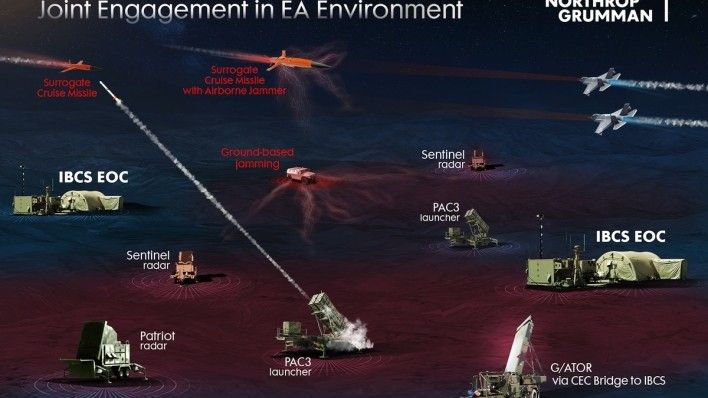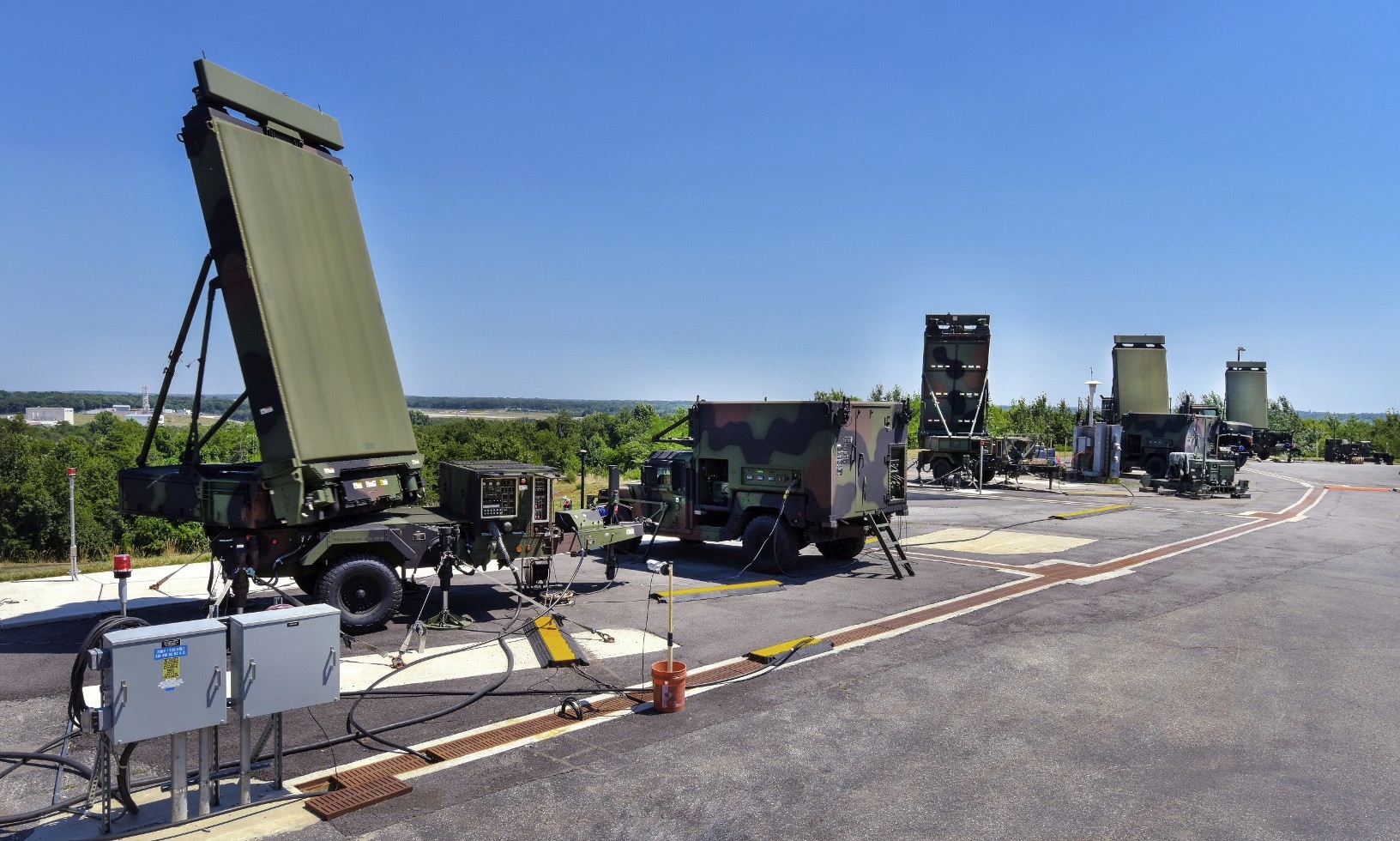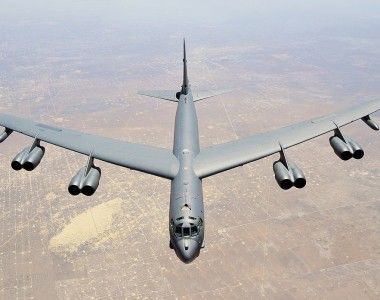IBCS as the Foundation for Multi-Domain Air Defense

IBCS, acquired for Poland as part of the first phase of the Wisła program, has recently undergone testing aimed at verifying its capability for joint engagement with systems from other branches of the U.S. Armed Forces within the framework of multi-domain operations. In turn, the signing of offset execution agreements and license agreements is a step foward to its wider deployment to the Polish Armed Forces.
The Integrated Air and Missile Battle Command System (IBCS), developed by Northrop Grumman under a contract from the U.S. Defense Department, is also essential for the Polish Armed Forces. It has been acquired in the first phase of the Wisła air defense program, along with Patriot Air Defense systems. IBCS is based on the principle „any sensor, best effector” and can combine various components of the air defense system to include medium and short-range systems. That is why its application can be extended.
Czytaj też: IBCS in Production Phase. More Tests Soon
The recent months have seen many important events which will influence the further implementation of the IBCS program in the United States, but also on the deployment of the system in Poland, including the area of industrial collaboration. It is worth taking a closer look, especially in the context of modernization programs conducted by the Polish Armed Forces.
IBCS in the U.S.
After the January 2021 Milestone C decision to transition IBCS from the engineering and manufacturing development (EMD) phase to the production and deployment phase, a Low Rate Initial Production/Full Rate Production (LRIP/FRP) contract for the delivery of IBCS components to the U.S. Army is to be signed. The LRIP/FRP award of a multi-year contract is expected later this fall and will cover the period through fiscal year 2026.
This will allow for a much wider scale of deliveries of IBCS components and the upgrading of air defense units, so that the equipment used by them, such as Patriot systems and Sentinel v3/v4 radars, will function as part of a fully integrated air defense system. Once it enters production, many other components, such as the IFPC Inc-2I short-range suite, are also to be integrated with IBCS.
Parallel to LRIP/FRP production, IBCS is being prepared for operational service. The 3-43 ADA Patriot Battalion, which is currently testing IBCS, will be the first unit to achieve Initial Operational Capability (IOC) status, which is planned for 2022. Equipment that has been produced while still in the research and development phase will be used in operational service, after being adapted to a production representative configuration. This will reduce the time of reaching initial operational capability.
However, for IBCS to be approved for Full Rate Production and reach initial operational capability, Initial Operational Testing and Evaluation (IOT&E) testing must be conducted to verify its performance under near-battlefield conditions. IOT&E testing will begin this fall and be completed early next year. Their successful conclusion will pave the way for fielding the first IBCS-equipped battalion to operational service. Among other things, several flight tests are planned as part of IOT&E.
Even before the start of IOT&E, the U.S. Army and Northrop Grumman conducted a test of the IBCS system, Flight Test 6 (FT-06), verifying its functionality and capability to integrate additional sensors and effectors from across multiple domains and across the U.S. services . In fact, the test demonstrated not only the capability of IBCS to operate between different elements of the land forces (U.S. Army), but also to work in conjunction with sensor systems from the United States Marine Corps and United States Air Force.
The FT-06 test had three objectives: to reduce risk prior to the Initial Operational Testing and Evaluation phase in which subsequent live fire tests are planned, to test the ability to operate in a highly contested electronic attack environment, and to conduct a joint engagement leveraging sensor capabilities from the United States Army, the U.S. Marine Corps (G/ATOR), and U.S. Air Force aircraft (F-35).
The test scenario, conducted at White Sands Missile Range, involved the launch of two targets with cruise missile characteristics, one of which was to threaten protected facilities, the other to conduct an electronic attack. In addition to the Patriot launcher with PAC-3 missiles, one Patriot radar, two Sentinel radars, two USAF-owned F-35A fighters, but also a G/ATOR radar station belonging to the U.S. Marines were integrated with IBCS during the test.
The latter, however, was not connected to IBCS directly, via A/B-Kits. Instead, it operated in another air defense fire control network, the Cooperative Engagement Capability (CEC), used by the U.S. Navy and Marines. However, the two systems were connected with the help of the Joint Track Management Capability (JTMC) system developed by the U.S. Missile Defense Agency (MDA). This allowed for the generation of a joint air picture and the successful engagement of the surrogate cruise missile target with a single PAC-3 missile, all while in a contested electronic attack environment.

As the MDA emphasized in its announcement, the test proved the ability to combine different fire control networks using the Joint Track Management Capability (JTMC)bridging capability. It should be remembered that within the Cooperative Engagement Capability there are not only G/ATOR radars, but also the Aegis ships radars or those of F-35 fighter planes in "naval" versions F-35B and F-35C. If such a solution is put into service, the IBCS system will gain the ability to fight targets indicated by maritime sensors as well. It will also be able to work the other way around - once the two networks are connected, sensors integrated with IBCS could track targets fought by sea-based effectors, such as the Standard SM-6 missiles, for example.
Such efforts are part of building the Joint All Domain Command and Control (JADC2), which is one of the priorities of the U.S. Armed Forces. Thus, there are many indications that IBCS will be the U.S. Army's contribution to JADC2, providing the ability to collaborate in air defense (and perhaps in the future to perform other tasks such as offensive strikes) across domains and multiple services.
Development of the Integrated Air and Missile Defense Capability in Poland
In parallel with the development of the IBCS in the United States, further steps are being taken to implement it more widely in Poland, in cooperation with domestic industry. These include both the Wisła program, which is already underway, and preparation for use of the system in other projects, including the Narew program.
Back in January, it was reported that the IBCS system had been successfully integrated with the R-460A radio relay from Polish company Transbit. The project was an initiative of Northrop Grumman and Transbit. It is aimed at creating an Integrated Fire Control Network (IFCN) within the IBCS system. As a result, it will be possible to replace the standard American IFCN radios with Polish ones that will be included in the Mobile Communications Centers (MCC). The system configured will retain all capabilities, including the possibility of direct information exchange with the U.S. Army IBCS network, while being better adapted to Polish requirements.
On the other hand, in August this year a package of offset execution agreements and license agreements was signed with Northrop Grumman, in connection to the first phase of the Wisła program. As a result of the execution of these agreements, the Polish industry will gain capabilities related to the use of IBCS. This is importantbecause, in accordance with the proposal for the Narew program and the second phase of the Wisla program (the so-called payload approach), both the operations centers (equivalents of the Engagement Operations Center - EOC) and the Mobile Communication Centers (MCC) will be designed and integrated in Poland, and Northrop Grumman will supply them only with components directly related to the IBCS network and software system. – The signing of business license agreements for the offset program supports the capabilities of Polish industry, both in terms of Operations Centers and Mobile Communication Centers. – Bill Lamb emphasizes in an interview with Defence24.pl. – This is another step towards integration of Polish capabilities with IBCS – he adds.
As part of the package of license and offset agreements, capabilities will also be established in the domestic industry to integrate IBCS and domestic components, such as sensors and effectors, through A/B-Kits. Thus, the Sajna radars and the effector that Poland will select for the Narew air defense system will be integrated with IBCS in the future. However, before that, still within the framework of the Wisła program phase, the short-range Bystra radar is to be integrated with the system, to perform a similar function as the Sentinel radars supporting the U.S. Army Patriots. Colonel Michał Marciniak, PhD, plenipotentiary of MOND for the acquisition and implementation of the Wisła system recently discussed the planned integration of the IBCS system with the Bystra radar on the Defence24 SKANER channel.
With time, other Polish sensors will also be integrated with IBCS, such as PET-PCL and P-18PL early warning radars, which are to be ultimately used in both short- and medium-range systems. Other areas of cooperation with the Polish industry are also possible.
Back in May 2021, Northrop Grumman signed a Memorandum of Understanding (MoU) with Teldat, initiating a business collaboration between the two companies related to the development and integration of command systems. – We understand how important it is for Poland to include national capabilities in such programs as Narew, so we want to expand cooperation with Polish companies, both those belonging to PGZ and others, like TELDAT – Bill Lamb emphasized.
In both the U.S. Army and the Polish Armed Forces, IBCS will become a key building block for integrated ground-based air defense. The next step may be the use of this system for multi-domain operations. Of particular importance from Poland's point of view is the ability of this system to cooperate with F-35 fighters, such as those acquired under the Harpia program. Once integrated, this will enable the air defense system to fight targets that are not visible to ground-based radars but have been detected by the fighter aircraft.
However, recent IBCS trials of integration with the Cooperative Engagement Capability system used by the U.S. Navy also demonstrate the capability of cooperation with naval systems. If properly configured, a similar capability could also be introduced in Poland for the newly acquired Miecznik frigates, which are expected to have extensive air and missile defense capabilities. IBCS can thus combine ground-based air defense with maritime and airborne systems, providing multi-domain cooperation capabilities.
Article prepared in cooperation with Northrop Grumman.



